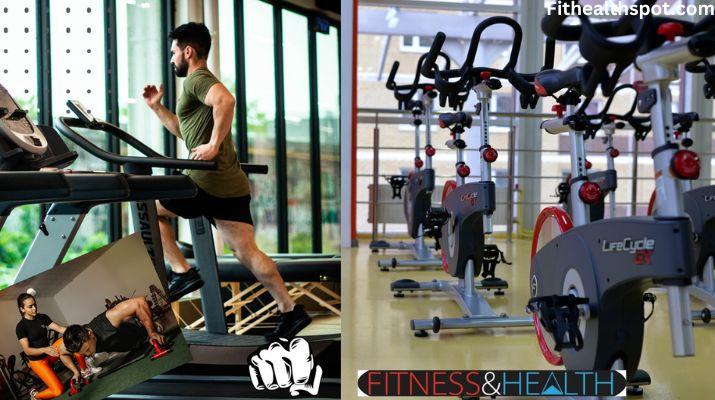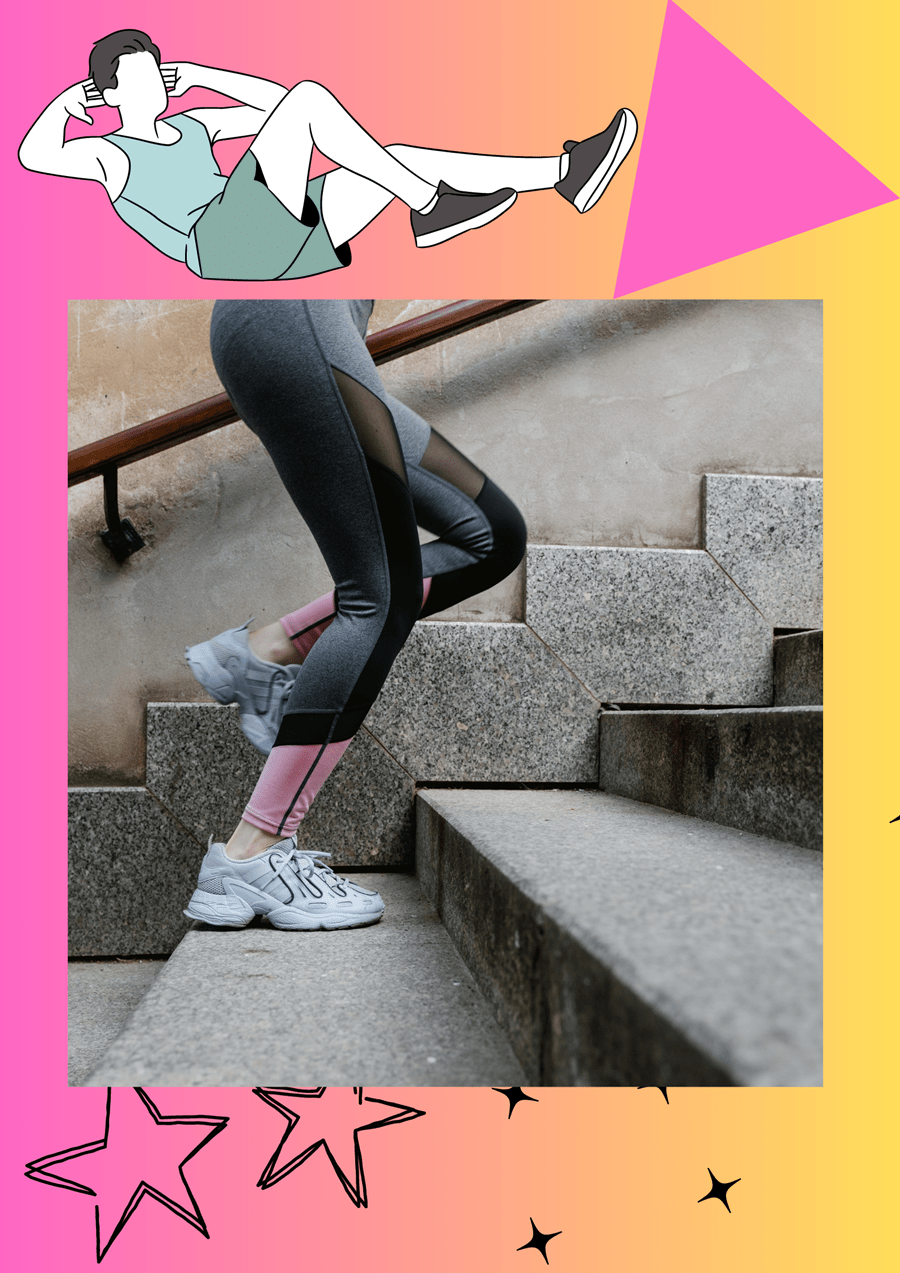Unleash the Power of Your Calves: Discover the Best Calf Exercises
Strong and well-defined calves not only enhance your lower body aesthetics but also play a crucial role in supporting your overall lower body strength and stability. Whether you’re an athlete or a fitness enthusiast, incorporating the right calf exercises into your workout routine can lead to significant improvements. In this blog, we’ll explore two of the best calf exercises that are simple yet highly effective: the Seated Calf Raise and the Single Leg Calf Raise.
Seated Calf Raise: Building Strength from a Seated Position
The Seated Calf Raise is a targeted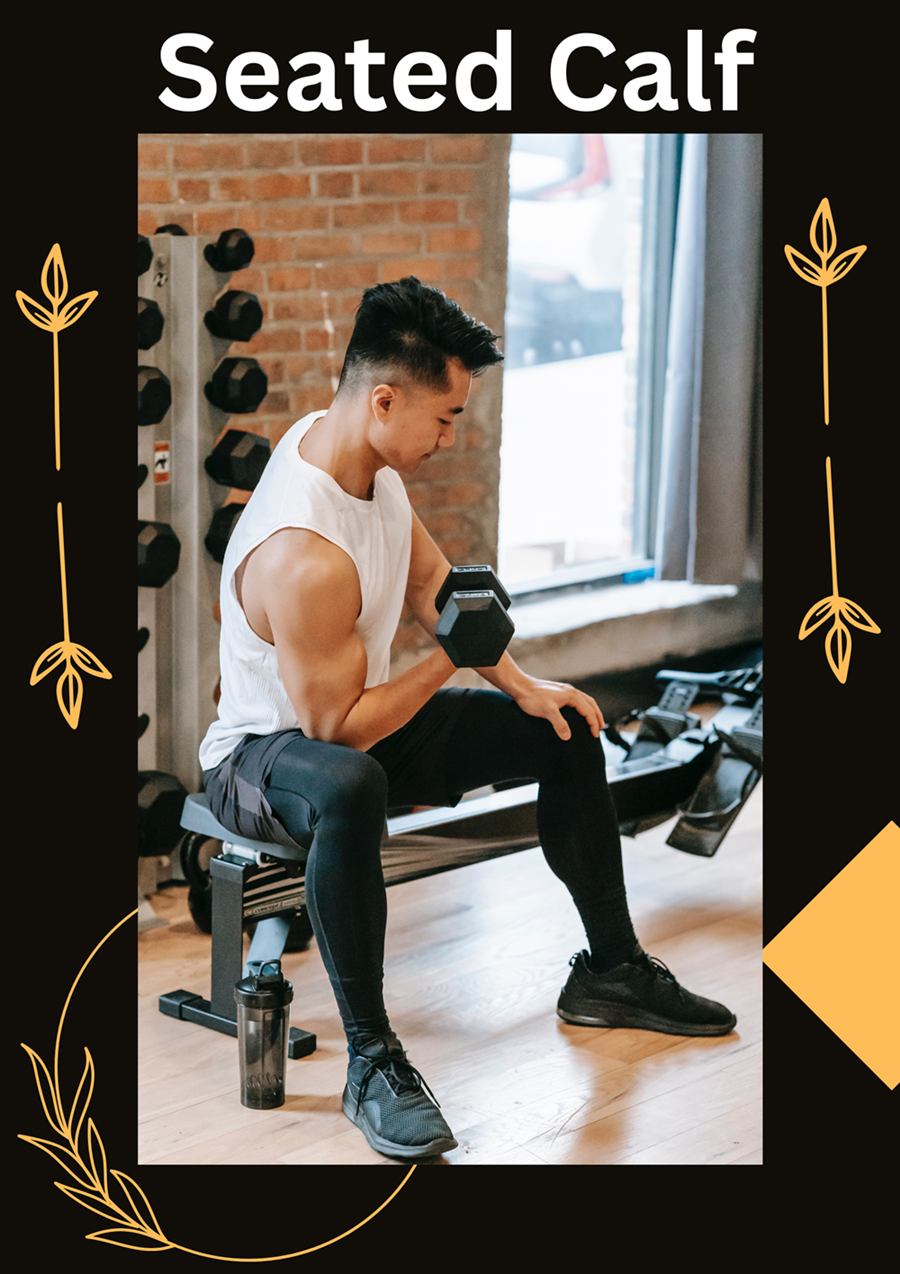
Step 1: Sit on a calf raise machine or a sturdy chair with your feet flat on the ground and your knees bent at 90 degrees.
Step 2: Place a weight bar or dumbbells across your thighs, holding it firmly with your hands to create resistance.
Step 3: Lift your heels off the ground as high as possible while keeping the balls of your feet firmly planted.
Step 4: Hold the raised position for a moment, feeling the contraction in your calves.
Step 5: Slowly lower your heels back to the starting position.
Step 6: Continue performing the exercise for the suggested number of repetitions.
Key Benefits of Seated Calf Raise:
Isolates the calf muscles for targeted growth.
Can be easily adjusted to accommodate varying fitness levels.
Reduces stress on the lower back compared to standing calf exercises.
Single Leg Calf Raise: Achieving Balance and Stability
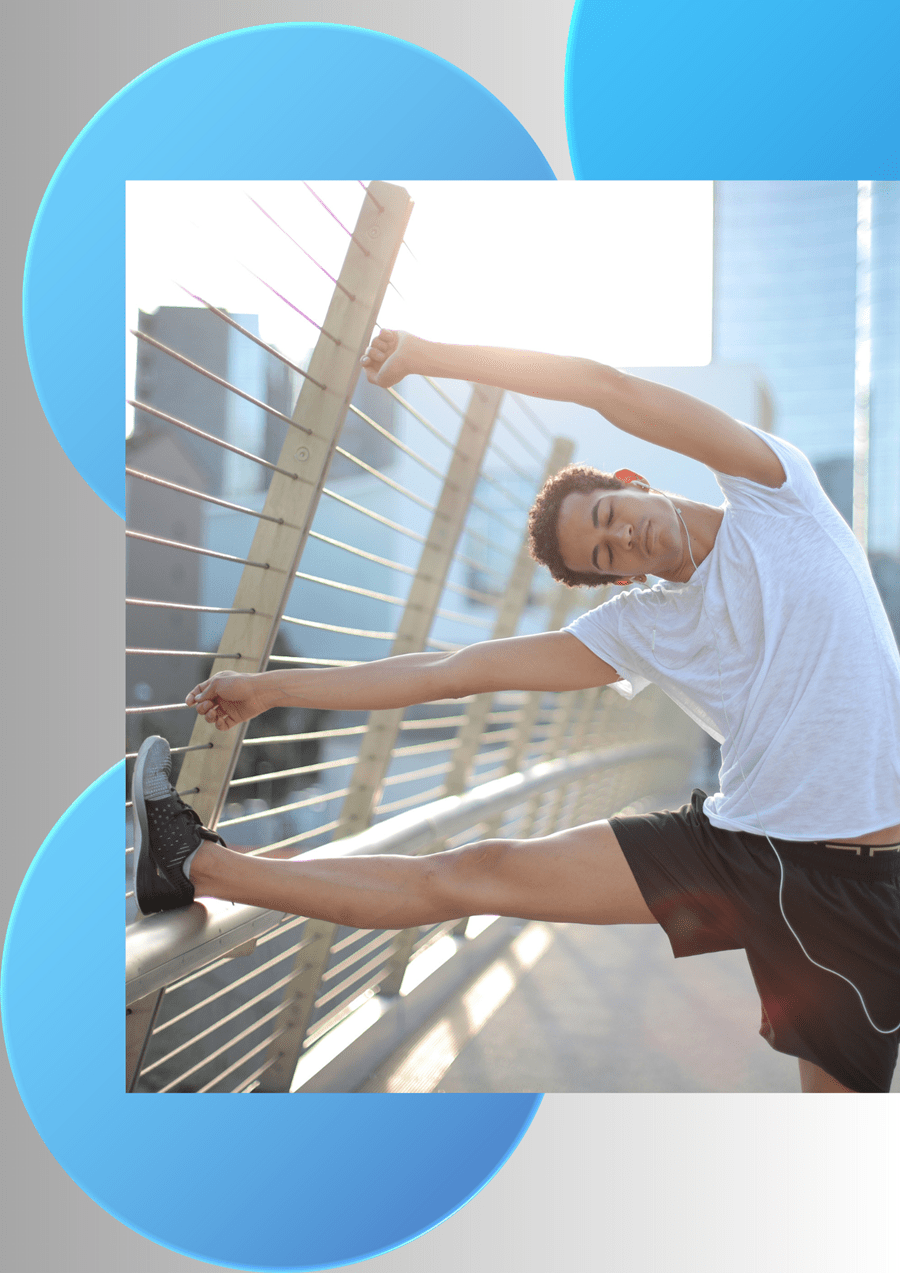
Step 1: Stand near a wall or a sturdy support with your feet shoulder-width apart.
Step 2: Shift your weight onto one leg while slightly lifting the other foot off the ground.
Step 3: Rise onto the ball of the supporting foot as high as you can, lifting your heel off the ground.
Step 4: Pause briefly at the top, feeling the calf muscle engage.
Step 5: Lower your heel back down in a controlled manner.
Step 6: Repeat for the desired number of repetitions on one leg before switching to the other.
Key Benefits of Single Leg Calf Raise:
Enhances balance and stability by working one leg at a time.
Helps correct strength imbalances between the calves.
Improves ankle strength and proprioception
Benefits of Single Leg Calf Raise: Unilateral Strength and Stability
The Single Leg Calf Raise, as discussed earlier, offers numerous benefits beyond just sculpting your calf muscles. Let’s delve deeper into the advantages of incorporating this exercise into your fitness routine:
Unilateral Strength Development:
By working one leg at a time, the Single Leg Calf Raise helps address any muscle imbalances between your calves. This ensures that both sides of your lower legs develop evenly, reducing the risk of injuries caused by strength disparities.
Enhanced Balance and Stability:
Performing the exercise on one leg challenges your proprioception and balance. This engagement of stabilising muscles in your ankle and foot promotes greater overall stability, crucial for daily activities and athletic performance.
Greater Muscle Activation:
When you focus on a single leg, the calf muscles experience more concentrated engagement. This targeted approach can lead to improved muscle activation and growth compared to the Double Leg Calf Raise.
Injury Prevention:
The Single Leg Calf Raise not only strengthens your calves but also reinforces the connective tissues around your ankles. This added stability and strength can help reduce the risk of ankle sprains and other lower leg injuries.
Functional Benefits:
Strong calf muscles and enhanced balance from Single Leg Calf Raises translate into improved functional movements, such as walking, running, and jumping. These everyday activities become more efficient and less taxing on your body.
Double Leg Calf Raise: Building Foundation and Power
The Double Leg Calf Raise is a fundamental calf exercise that complements the single-leg version. By engaging both calf muscles simultaneously, this exercise offers its own set of unique benefits:
Balanced Muscle Development:
While the Single Leg Calf Raise helps address imbalances, the Double Leg Calf Raise ensures both calves receive equal attention and stimulation. This balanced muscle development contributes to overall leg strength and aesthetics.
Weight Management and Endurance:
The Double Leg Calf Raise is an effective way to build muscular endurance in your calf muscles. Increased endurance can aid in various physical activities and contribute to improved weight management.
Versatility and Accessibility:
Unlike the Single Leg Calf Raise, the double leg version can be performed with minimal equipment or even just body-weight. This accessibility makes it an excellent option for those without access to specialised gym equipment.
Time-Efficient Workout:
Working both calves simultaneously allows you to complete the exercise in less time, making it an efficient addition to your workout routine when time is limited.
Dynamic Warm-up Option:
Incorporating Double Leg Calf Raises in your warm-up routine can help increase blood flow to the calf muscles, reducing the risk of injuries during more intense exercises.
Benefits of Double Leg Calf Raise: Power and Efficiency for Stronger Calves
The Double Leg Calf Raise, as highlighted earlier, plays a significant role in sculpting and strengthening the calf muscles. Let’s explore more of the advantages this exercise offers:
Increased Muscle Mass:
The Double Leg Calf Raise is an excellent choice for hypertrophy, or muscle growth, as it allows you to lift more weight compared to single-leg exercises. By challenging both calves simultaneously, you stimulate greater muscle fiber recruitment, leading to increased muscle mass over time.
Power Generation:
Strong calves are essential for generating explosive power in various athletic movements, such as jumping and sprinting. The Double Leg Calf Raise helps develop the power needed for such dynamic actions, making it valuable for athletes and fitness enthusiasts alike.
Time-Efficient Strength Building:
For individuals with busy schedules, the Double Leg Calf Raise provides an efficient way to target and strengthen both calves in a single exercise. It enables you to work on your calf muscles effectively without compromising other essential parts of your workout routine.
Support for Compound Movements:
Many compound lower body exercises, such as squats and dead-lifts, heavily engage the calf muscles. Building calf strength through Double Leg Calf Raises can complement these compound movements, improving your overall lower body strength and stability.
Injury Prevention and Rehabilitation:
Strong calf muscles contribute to lower limb stability, reducing the risk of injuries during various physical activities. Additionally, incorporating Double Leg Calf Raises can be beneficial during calf muscle rehabilitation after an injury, helping to regain strength and function.
Leg Press Calf Raise: Unleashing the Potential of Leg Press for Calves
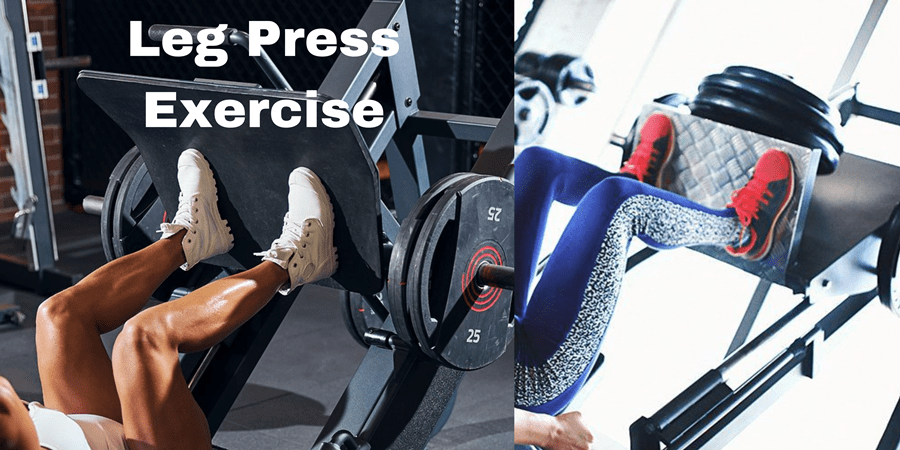
Step 1: Sit on a leg press machine with your back firmly against the backrest and your feet flat on the footplate shoulder-width apart.
Step 2: Unrack the weight by pushing the footplate away from the locked position.
Step 3: Lower the weight slowly by bending your knees until your calves are fully stretched.
Step 4: Push the footplate upward with the balls of your feet, extending your ankles and engaging your calf muscles.
Step 5: Hold the raised position for a moment to feel the contraction in your calves.
Step 6: Lower the footplate back down in a controlled manner, returning to the starting position.
Step 7: Repeat for the desired number of repetitions.
Key Benefits of Leg Press Calf Raise:
Isolates the calf muscles with added resistance for optimal growth.
Allows for a full range of motion to target both the gastrocnemius and soleus muscles effectively.
Can be easily adjusted to accommodate various fitness levels and training goals.
Seated Calf Raise: Mastering Calf Growth with Precision
The Seated Calf Raise, as briefly mentioned earlier, is a powerful exercise that targets the calf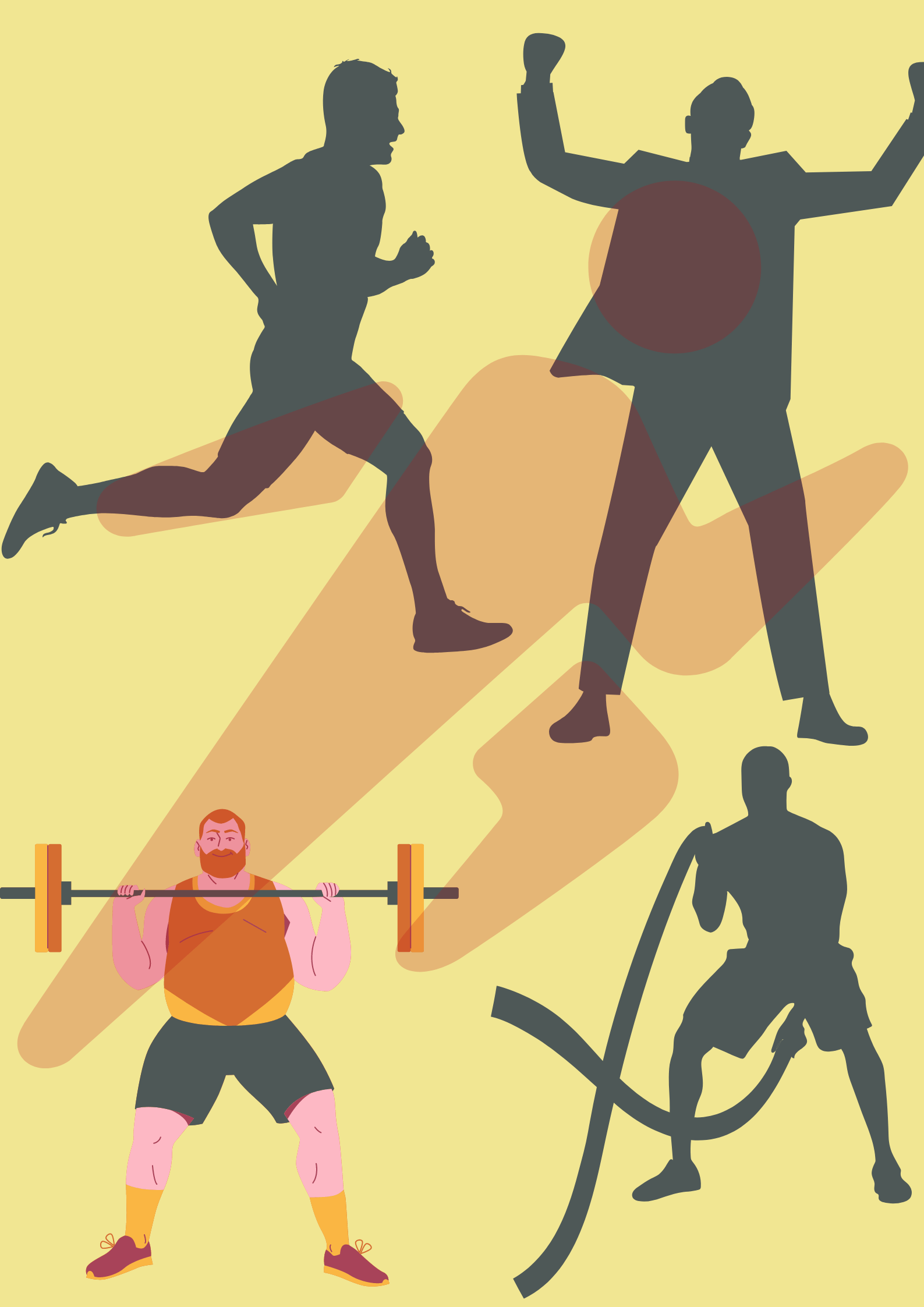
Proper Form on a Seated Calf Raise Machine:
To perform the Seated Calf Raise, you’ll need access to a seated calf raise machine, commonly found in gyms. Here’s a step-by-step guide on how to execute this exercise effectively:
Step 1: Adjust the machine to fit your height, ensuring that the shoulder pads rest comfortably above your knees when seated.
Step 2: Sit on the machine with your feet flat on the designated platform and your toes pointed forward.
Step 3: Place the balls of your feet on the edge of the platform, allowing your heels to extend off the back.
Step 4: Grasp the handles on the sides of the machine for stability and support.
Step 5: Lift your heels off the ground as high as possible by extending your ankles, focusing on contracting your calf muscles.
Step 6: Hold the raised position for a moment to maximise the muscle engagement.
Step 7: Slowly lower your heels back down to the starting position.
Step 8: Repeat for the recommended number of repetitions.
Key Benefits of Seated Calf Raise:
Precise Isolation: The seated position and the machine’s design target the calf muscles directly, allowing for precise isolation and a more focused workout.
Adjustable Resistance: Seated calf raise machines typically have weight stacks that can be adjusted to suit your fitness level, making it suitable for beginners and advanced lifters alike.
Lower Back Support: Unlike standing calf raises, the seated version provides additional lower back support, reducing the risk of strain or injury on the lumbar region.
Maximising Your Seated Calf Raise Routine:
To make the most of your seated calf raise workouts, consider incorporating the following tips:
– Progressive Overload: Gradually increase the weight or resistance as your calf muscles get stronger to stimulate ongoing growth and development.
– Tempo Control:
Perform the exercise with controlled movements, emphasising both the upward contraction and the slow lowering phase for optimal results.
Variations: For added variety in your routine, consider performing the exercise with your toes pointed inward or outward, which targets different areas of the calf muscles.
Standing Calf Raise: Elevate Your Calves to New Heights
The Standing Calf Raise is a classic yet highly effective exercise that targets the calf muscles from a different angle. By performing this exercise, you can engage the calf muscles in a more functional way, mimicking everyday movements like walking and running. Let’s delve into the details of the Standing Calf Raise:
Proper Form for Standing Calf Raise:
To perform the Standing Calf Raise, you can either use a standing calf raise machine or simply use your body-weight. Here’s how to execute this exercise correctly:
Using Body-weight:
Step 1: Stand with your feet shoulder-width apart on a flat surface.
Step 2: Position your hands against a wall or a sturdy object for balance.
Step 3: Rise onto the balls of your feet as high as you can, lifting your heels off the ground.
Step 4: Hold the raised position for a moment, focusing on squeezing your calf muscles.
Step 5: Lower your heels back down in a controlled manner.
Step 6: Repeat for the desired number of repetitions.
Using a Standing Calf Raise Machine:
Step 1: Adjust the machine to fit your height and place your shoulders under the padded lever.
Step 2: Position the balls of your feet on the edge of the platform and your heels extending off the back.
Step 3: Lift the lever by extending your ankles, raising your heels as high as possible.
Step 4: Hold the raised position briefly to intensify the calf muscle contraction.
Step 5: Lower your heels back down with control to complete one repetition.
Step 6: Repeat for the recommended number of reps.
Key Benefits of Standing Calf Raise:
Functional Strength:
The Standing Calf Raise mimics the natural motion of pushing off the balls of your feet, making it highly functional for activities like walking, running, and jumping.
Improved Ankle Mobility:
Regularly performing the exercise can enhance ankle flexibility and mobility, reducing the risk of stiffness and discomfort in the lower legs.
Versatility:
The Standing Calf Raise can be done virtually anywhere, either with a machine or using your body-weight, making it accessible for people without access to gym equipment.
Utilising the Standing Calf Raise Machine:
If your gym offers a standing calf raise machine, take advantage of the added benefits it provides:
Adjustable Resistance:
The machine allows you to increase or decrease the weight as needed, ensuring progressive overload for continued calf muscle development.
Stability and Control:
Using the machine provides additional stability and control during the exercise, allowing you to focus solely on contracting the calf muscles without worrying about balance.
Elevated Calf Raise: Rising Above the Ordinary
The Elevated Calf Raise is a unique variation of the traditional calf raise exercise that provides an increased range of motion, intensifying the muscle engagement and challenge. This exercise can be performed without any specialised equipment, making it accessible to individuals of all fitness levels. Let’s explore the benefits and how to perform the Elevated Calf Raise:
How to Perform the Elevated Calf Raise:
To execute the Elevated Calf Raise, you’ll need a stable elevated surface, such as a step or a sturdy block. Here’s a step-by-step guide:
Step 1: Stand with the balls of your feet on the edge of the elevated surface, ensuring your heels hang off the back.
Step 2: Place your hands against a wall or a solid object for balance and support.
Step 3: Rise onto the balls of your feet as high as possible, lifting your heels and feeling the stretch in your calf muscles.
Step 4: Hold the raised position for a moment, focusing on squeezing your calves.
Step 5: Lower your heels back down with control.
Step 6: Repeat for the desired number of repetitions.
Key Benefits of Elevated Calf Raise:
Increased Range of Motion:
Elevating your heels allows for a deeper stretch and contraction of the calf muscles, leading to greater muscle activation and potential growth.
Versatility:
The Elevated Calf Raise can be done practically anywhere with an elevated surface, making it a convenient exercise to include in your routine.
Balance and Stability:
Balancing on the edge of the elevated surface challenges your stability and proprioception, contributing to improved balance over time.
Donkey Calf Raise: Building Powerful Calves Like a Beast
The Donkey Calf Raise is a classic bodybuilding exercise that targets the calf muscles with significant resistance. Historically performed with a partner sitting on your lower back, modern gyms now offer specialised machines to replicate this movement. Let’s explore the benefits and how to perform the Donkey Calf Raise:
Utilising the Donkey Calf Raise Machine:
The Donkey Calf Raise Machine is designed to mimic the traditional exercise while providing added benefits:
Step 1: Adjust the machine to fit your height and position yourself on the platform facing away from the machine.
Step 2: Place your lower back against the padded lever, ensuring it sits just above your hips.
Step 3: Position your feet shoulder-width apart on the platform, with your toes pointing forward.
Step 4: Lift your heels off the ground as high as possible by extending your ankles.
Step 5: Hold the raised position briefly, emphasising the contraction in your calf muscles.
Step 6: Lower your heels back down in a controlled manner.
Step 7: Repeat for the recommended number of repetitions.
Key Benefits of Donkey Calf Raise:
Heavy Resistance:
The Donkey Calf Raise Machine allows for substantial weight to be used, promoting strength and size gains in the calf muscles.
Time Under Tension:
This exercise keeps the calf muscles under tension for a longer duration, leading to greater muscle activation and potential growth.
Lower Back Support:
Unlike the traditional Donkey Calf Raise, the machine version provides added lower back support and stability during the exercise.
Calf Exercises at Home: Hopping Towards Stronger Calves
While gym equipment like calf raise machines and leg press are excellent for calf training, you can still achieve impressive results from the comfort of your home. Let’s explore some effective calf exercises that require minimal equipment, allowing you to hop towards stronger calves without leaving home.
Lunge Jumps: Plyometric Power for Calves
Lunge jumps are a dynamic plyometric exercise that not only targets the calf muscles but also engages the entire lower body. Here’s how to perform lunge jumps correctly:
Step 1: Position yourself with your feet at shoulder-width distance.
Step 2: Step one foot back into a reverse lunge position, ensuring your front knee is bent at a 90-degree angle.
Step 3: Explosively push off the ground, jumping into the air and switching leg positions mid-air.
Step 4: Land softly with your opposite foot in front, returning to the lunge position.
Step 5: Repeat the movement, alternating legs with each jump.
Weighted Jump Rope: Building Calf Strength and Cardiovascular Endurance
Using a weighted jump rope adds resistance to your jumping routine, creating an effective calf workout that also improves cardiovascular endurance. Here’s how to get started:
Step 1: Stand with your feet together and hold the handles of the weighted jump rope.
Step 2: Swing the rope overhead and start jumping, using your calf muscles to push off the ground and maintain the rhythm.
Step 3: Aim for a steady pace, keeping the movement fluid and controlled.
Step 4: Continue jumping for a set duration or a specific number of repetitions.
Chinese Jump Rope: Fun and Engaging Calf Exercise for All Ages
Chinese jump rope, also known as Chinese elastic game, is a playful and engaging activity that targets the calf muscles while promoting coordination and agility. Here’s how to play:
Step 1: Find a long elastic band or rope and form a large loop.
Step 2: Two people should hold the loop around their ankles, creating tension.
Step 3: A third person, known as the jumper, stands inside the loop.
Step 4: The jumper hops over the elastic in various patterns, such as side-to-side or front-to-back, without touching the elastic.
Step 5: As the jumper progresses, the loop is raised higher, increasing the challenge for the calf muscles.
Double Dutch Jump Rope: Twisting and Turning for Calf Strength
Double Dutch jump rope involves two long ropes turned in opposite directions, challenging your calf muscles with precise timing and coordination. Here’s how to participate:
Step 1: Two people hold the ends of the ropes, swinging them in opposite directions.
Step 2: The jumper stands in the middle, waiting for the right moment to jump.
Step 3: As the ropes come around, the jumper must time their jump to clear both ropes without touching them.
Step 4: The movement continues with the jumper performing various tricks and jumps.
Hang Clean Pull: Unleashing Explosive Power for Stronger Calves
The Hang Clean Pull is a dynamic Olympic weightlifting exercise known for its ability to build explosive power and strengthen multiple muscle groups, including the calves. This movement is a precursor to the full clean and jerk, but even on its own, it offers remarkable benefits for calf development. Let’s explore the Hang Clean Pull and its advantages:
How to Perform the Hang Clean Pull:
The Hang Clean Pull involves lifting a barbell from a hanging position, engaging the calves in an explosive manner. Here’s a step-by-step guide:
Step 1: Position yourself with your feet shoulder-width apart, while grasping a barbell using an overhand grip.
Step 2: Bend at the hips and knees, lowering the bar to hang just above knee level.
Step 3: Explosively extend your hips and shrug your shoulders, pulling the barbell up towards your chest.
Step 4: Keep your elbows high, and your wrists straight throughout the movement.
Step 5: Lower the barbell back to the hanging position with control.
Step 6: Repeat for the desired number of repetitions.
Benefits of Hang Clean Pull:
Calf Activation:
The Hang Clean Pull requires powerful ankle extension, making the calves work dynamically to generate force and propel the body upwards.
Full-Body Workout:
This exercise engages various muscle groups, promoting overall strength and athletic performance.
Explosive Power:
Training the calves to generate explosive power can enhance performance in activities like jumping, sprinting, and agility-based sports.
Bent-Knee Calf Raises: Targeted Strengthening for Calf Muscles
Bent-Knee Calf Raises offer a unique twist on the traditional calf raise exercise, placing greater emphasis on the soleus muscle. This variation provides targeted calf strengthening and helps build lower leg stability. Here’s how to perform Bent-Knee Calf Raises:
Step 1: Stand on a step or an elevated surface with the balls of your feet on the edge and your heels extending off.
Step 2: Bend your knees slightly to engage the soleus muscle.
Step 3: Rise onto the balls of your feet as high as possible, lifting your heels off the edge.
Step 4: Hold the raised position for a moment to feel the contraction in your calves.
Step 5: Lower your heels back down in a controlled manner.
Step 6: Perform the exercise for the prescribed number of repetitions.
Farmer’s Carry Exercise: Unconventional Calf Challenge
The Farmer’s Carry is a simple yet highly effective exercise for calf and grip strength. This exercise involves carrying heavy weights in each hand, challenging the calf muscles to stabilise and support the body during movement. Here is the step-by-step guide to perform the Farmer’s Carry:
Step 1: Stand with a dumbbell or kettlebell in each hand.
Step 2: Keep your back straight and shoulders pulled back.
Step 3: Walk with a strong, purposeful stride, ensuring your calves engage to support the weight.
Step 4: Continue walking for a set distance or time, maintaining proper form.
Step 5: Gradually increase the weight as your calf strength improves.
Single Arm Farmer’s Carry: Unilateral Calve Challenge
The Single Arm Farmer’s Carry takes the calf strengthening to the next level by focusing on one leg at a time. This exercise helps correct imbalances and enhances stability. Here’s how to perform the Single Arm Farmer’s Carry:
Step 1: Hold a single dumbbell or kettlebell in one hand.
Step 2: Keep your shoulders squared and walk with a steady stride.
Step 3: Engage your calf muscles to support the weight as you walk.
Step 4: Switch arms and repeat for balanced calf development.
Leg Workouts with Dumbbells: Versatility and Effectiveness
Dumbbells are excellent tools for various leg exercises, including lunges, squats, and calf raises. By using dumbbells for calf workouts, you can achieve targeted strengthening and customisation based on your fitness level and goals.
Sled Drag: Building Endurance and Resilience in Calves
The Sled Drag is a challenging exercise that involves pulling a weighted sled with a harness or rope. This functional movement targets the calf muscles, enhancing endurance and building lower leg strength.
Calf Raises Benefits: Beyond Aesthetics
Calf raises offer a myriad of benefits that go beyond aesthetics. Strong and well-developed calf muscles support better posture, stability, and lower body performance. Additionally, strong calves reduce the risk of lower leg injuries and can improve athletic performance in various sports.
Tips for Building Bigger Calves: Unlocking Your Calf Potential
Building bigger calves requires consistent effort and dedication. Here are some tips to help you maximise your calf growth:
Progressive Overload:
Gradually increase the intensity of your calf exercises over time by adding weight or resistance.
Vary Your Exercises:
Incorporate different calf exercises, including standing and seated variations, to target the calf muscles from various angles.
Mind-Muscle Connection:
Focus on contracting the calf muscles during each repetition, emphasising the squeeze and stretch for optimal muscle activation.
Frequency and Consistency:
Train your calves regularly to stimulate muscle growth and adaptation.
Proper Nutrition:
Ensure you’re getting enough protein and nutrients to support muscle growth and recovery.
Conclusion
Incorporating targeted calf exercises into your workout routine can lead to strong and sculpted lower legs, providing both aesthetic benefits and functional improvements. The Seated Calf Raise allows for precise isolation of the calf muscles, reducing stress on the lower back and accommodating various fitness levels. On the other hand, the Single Leg Calf Raise enhances balance, stability, and addresses strength imbalances between the calves, promoting better overall lower limb stability and injury prevention.
The Double Leg Calf Raise complements the single-leg exercises, providing balanced muscle development, increased calf endurance, and time-efficient strength building. The Leg Press Calf Raise isolates the calf muscles effectively and allows for a full range of motion for targeted growth.
For those seeking calf exercises at home, options like lunge jumps, weighted jump rope, Chinese jump rope, and double Dutch jump rope offer convenient ways to target the calves and improve overall lower body strength and agility.
The Hang Clean Pull, Bent-Knee Calf Raises, Farmer’s Carry, Single Arm Farmer’s Carry, and Sled Drag present unique challenges to build explosive power, stability, and strength in the calf muscles.
By following progressive overload, varying exercises, maintaining a strong mind-muscle connection, consistency, and proper nutrition, you can unlock the full potential of your calf muscles for a fitter and healthier you.
Remember to consult with a fitness professional or healthcare provider before starting any new exercise regimen, especially if you have any pre-existing health conditions or injuries. With dedication and proper form, you can unlock the power of your calves and achieve stronger, more sculpted lower legs, enhancing your overall fitness and performance in various activities. So, take charge of your calf development and embark on the journey to strong and sculpted lower legs today!
Frequently Asked Questions (FAQs):
How often should I perform calf exercises?
The frequency of calf exercises depends on your fitness level, goals, and recovery capacity. For most individuals, training calves 2-3 times per week can be effective. However, it’s essential to allow enough rest between sessions to avoid over training.
Can I perform calf exercises without any equipment?
Yes, you can perform several calf exercises without specialised equipment. Body-weight exercises like standing calf raises, lunge jumps, and elevated calf raises can effectively target your calf muscles.
What are some tips for maximising calf growth?
To maximise calf growth, focus on progressive overload by gradually increasing the resistance or weight used in your exercises. Vary your calf exercises to target different muscle fibers, and maintain proper form with controlled movements for optimal muscle activation.
Can calf exercises help prevent lower leg injuries?
Yes, calf exercises can contribute to lower leg injury prevention. Strengthening the calf muscles and surrounding tissues improves stability and reduces the risk of strains and sprains during physical activities.
How long does it take to see results from calf exercises?
The time it takes to see results from calf exercises varies from person to person. Consistency, proper nutrition, and individual factors influence the rate of muscle growth. Generally, noticeable improvements may be seen within a few weeks to a couple of months with regular training.
Are calf exercises suitable for all fitness levels?
Yes, calf exercises can be adapted to suit different fitness levels. Beginners can start with body-weight exercises and gradually progress to using weights or resistance. Always pay attention to your body and seek advice from a fitness professional if you have any concerns.
Can calf exercises improve athletic performance?
Absolutely! Strong and powerful calf muscles are essential for various athletic movements, such as jumping, running, and changing direction. Including calf exercises in your training routine can enhance athletic performance in sports and activities that require lower body strength and explosiveness.
Should I stretch my calves after a calf workout?
Yes, stretching your calves after a workout is essential to maintain flexibility and prevent muscle tightness. Perform gentle calf stretches, holding each stretch for about 30 seconds to promote muscle recovery and reduce post-workout soreness.
Can I combine calf exercises with other leg workouts?
Yes, combining calf exercises with other leg workouts is a great way to have a comprehensive lower body training session. Exercises like squats, lunges, and dead-lifts already engage the calf muscles to some extent, but adding dedicated calf exercises will further target and strengthen them.
How can I make calf exercises more challenging?
To make calf exercises more challenging, you can increase the weight or resistance used, perform exercises on an elevated surface, or vary the tempo and number of repetitions. Additionally, plyometric calf exercises, like jump rope or lunge jumps, can provide an extra challenge for calf muscles and cardiovascular fitness.

